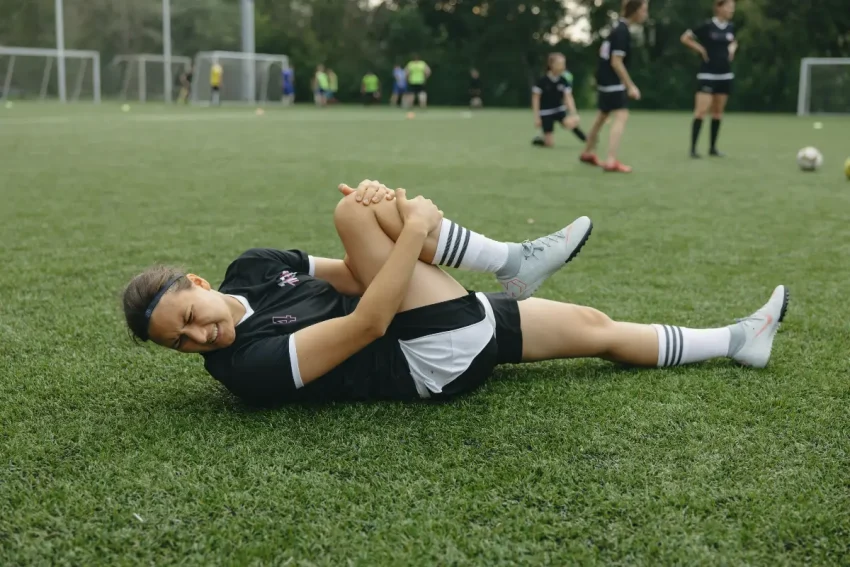Proven Tips to Help Athletes Recover Faster After Sports Surgery

Recovering from sports surgery is a crucial part of an athlete’s return to full performance. Whether it’s a knee, shoulder, or spinal injury, following proven strategies ensures a faster and more effective recovery.
Take the example of Austin Broderson, a college rodeo athlete. On 16th Jan 2025, he returned to the National Western Stock Show in Denver, CO, just one year after a serious injury.
The injury occurred during a fall in last year’s competition. His swift recovery highlights the importance of dedicated care. This care, most likely, included physical therapy in Denver, Colorado. Such a form of therapy is known to help athletes return to their sport stronger than ever.
In this article, we’ll share a few proven tips to help athletes recover faster after sports surgery.
Contents
Understand and Follow Your Surgeon’s Recovery Plan
A surgeon’s recovery plan is a personalized roadmap to guide your healing process after sports surgery. It typically includes timelines for rest, physical therapy, pain management, and activity restrictions.
The National Safety Council reported 3.7 million casualties in emergency departments due to sports and recreational equipment injuries. Basketball, biking, and gymnastics are the sports most commonly associated with injuries. No matter the type of surgery or treatment you are undergoing, it is important to follow your surgeon’s recovery plan.
Following this plan closely helps prevent complications, promotes proper healing, and ensures a safer, faster return to activity.
Work Closely With Physical Therapists
Physical therapists play a vital role in your post-surgery recovery by developing customized exercise programs that gradually rebuild strength, flexibility, and mobility. They monitor your improvement, adjust routines as required, and ensure you’re performing movements safely to avoid re-injury.
According to Total Physical Therapy, the latest physical therapy uses evidence-based techniques to relieve pain, restore mobility, and treat musculoskeletal injuries. Working closely with a physiotherapist in any kind of sports injury helps restore function more effectively and shortens recovery time. Their guidance also boosts confidence and keeps you motivated through each stage of healing, to make your return to sports smoother and safer.
What are the signs that a physical therapy exercise is too aggressive or causing harm?
Signs that a physical therapy exercise is too aggressive include sharp or increasing pain, inflammation, joint instability, or lingering soreness beyond 24-48 hours. You might also face a reduced range of movement or muscle weakness. Always report these symptoms to your therapist so that you can adjust your routine safely.
Prioritize Rest and Proper Sleep
Rest and quality sleep are vital for muscle repair, tissue regeneration, and overall recovery after sports surgery. During sleep, the body produces growth hormones that accelerate healing.
According to the Mayo Clinic Health System, inadequate sleep significantly impacts athletes’ performance by reducing reaction time and accuracy. Sleep-deprived athletes experienced up to a 50% drop in their performance. Conversely, 10 or more hours of sleep led to a 10% improvement.
Without proper rest, recovery slows down, and the risk of complications or re-injury increases. If sleep is disrupted due to pain or anxiety, speak with your doctor for solutions.
How can I improve sleep quality if I’m experiencing post-surgery pain?
Try using pillows for support and sleeping in recommended positions. Take prescribed pain medication before bedtime if advised. Relaxation methods like breathing exercises or meditation are also helpful. If discomfort persists, consult your doctor for alternative pain relief or sleep aid options.
Focus on Nutrition That Supports Healing
Nutrition plays a critical role in post-surgery recovery by supplying the body with the nutrients needed for tissue repair, inflammation control, and immune support. Proteins, vitamins, and minerals like vitamin C, zinc, and calcium accelerate healing and strengthen the body.
As per the British Dietetic Association, athletes need about 1.6g of protein/kg body weight daily. Excess protein isn’t usually necessary. Carbs range from 3g/kg body weight for low-demand sports to 10–12g/kg for high-demand sports like cycling or running.
Just like rest and therapy, proper nutrition is equally important; without it, recovery can be delayed or incomplete. Eating balanced, nutrient-rich meals supports energy levels and helps the body rebuild stronger after surgery.
What foods or drinks should I avoid to prevent inflammation or swelling?
To prevent inflammation or swelling, avoid processed foods high in sugar, refined carbs, and trans fats. Limit red meat, fried foods, and sugary drinks like soda. Alcohol can also worsen inflammation. Instead, focus on whole, anti-inflammatory foods like fruits, vegetables, lean proteins, and plenty of water to support healing.
Leverage Assistive Devices and Technologies
Assistive devices and technologies, such as crutches, braces, compression garments, or mobility aids, can significantly ease recovery after sports surgery.
Cleveland Clinic states that the most common causes of sports injuries include falls, which account for 25% of all sports injuries. Training hard for too long can also cause injuries. Direct impact with another player or getting hit by sports equipment also causes sports injuries.
Assistive devices protect healing areas, reduce strain, and promote proper movement patterns. Advanced tools like electrical stimulation devices or wearable trackers can also enhance rehabilitation. These aids can boost confidence, prevent setbacks, and support a safer, more efficient return to daily activities and athletic performance.
Plan a Gradual Return to Training and Competition
Returning to training and competition after sports surgery requires a gradual, well-structured approach to avoid re-injury and ensure long-term success. Rushing back too soon can strain healing tissues and undo progress. Start with light, low-impact exercises and progressively increase intensity under professional supervision.
Regular check-ins with your surgeon or physical therapist help track readiness and adjust your training load. Respecting your body by controlling limits is crucial. A patient, step-by-step return plan builds confidence, enhances performance, and supports a full, sustainable comeback to your sport.
Commit to a Smart Recovery Journey
Recovering from sports surgery takes more than just time, it requires dedication, patience, and smart strategies. By following your surgeon’s plan provided by therapists, proper rest, balanced nutrition, and supportive tools, you can accelerate healing and reduce setbacks.
A gradual return to activity, guided by professionals, ensures long-term success. Stay consistent, listen to your body, and you’ll be back stronger, safer, and ready to perform at your best.



